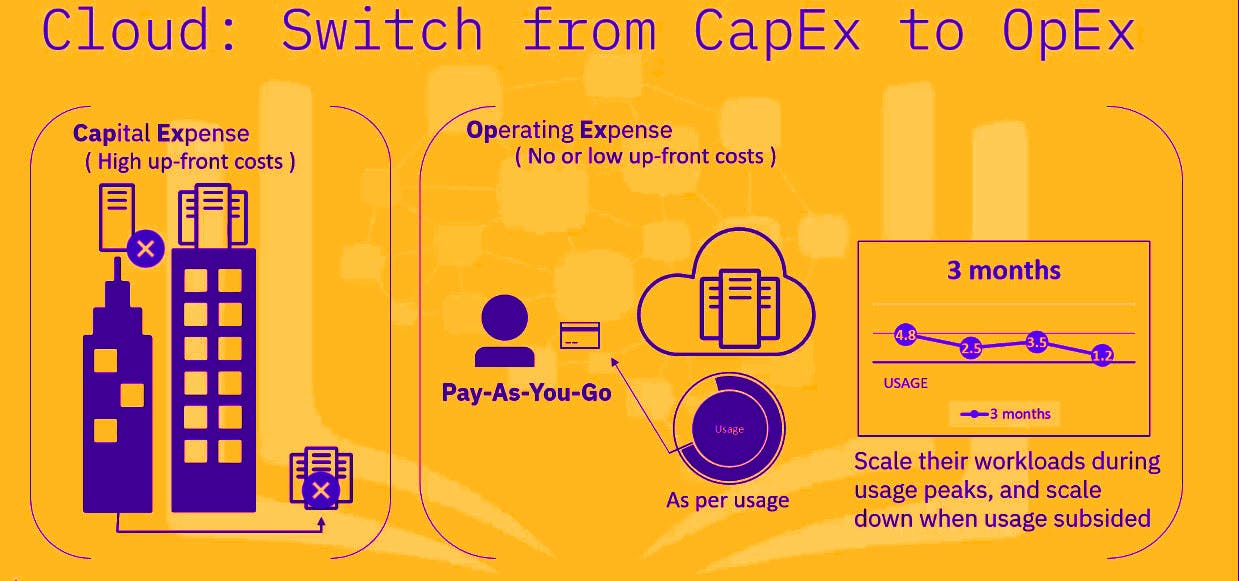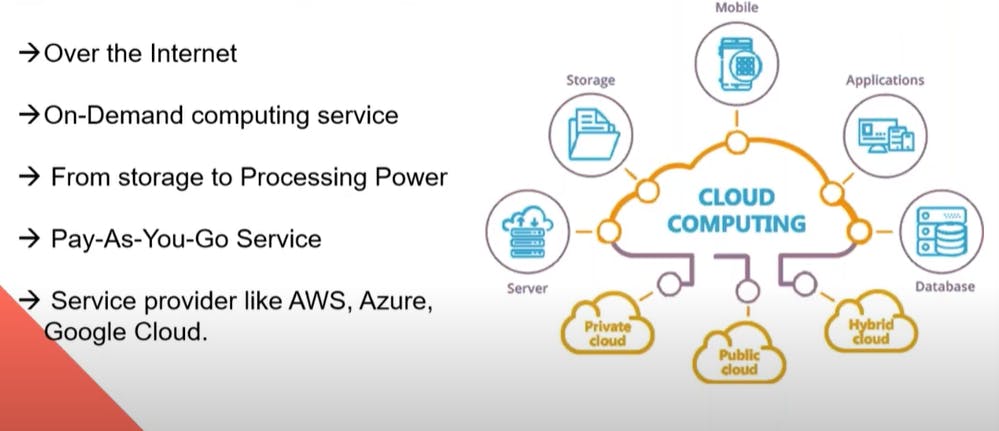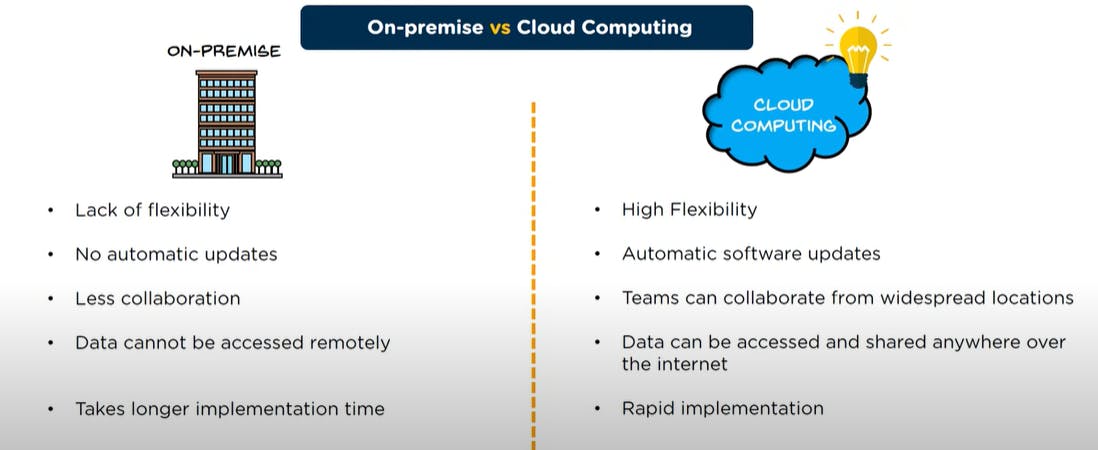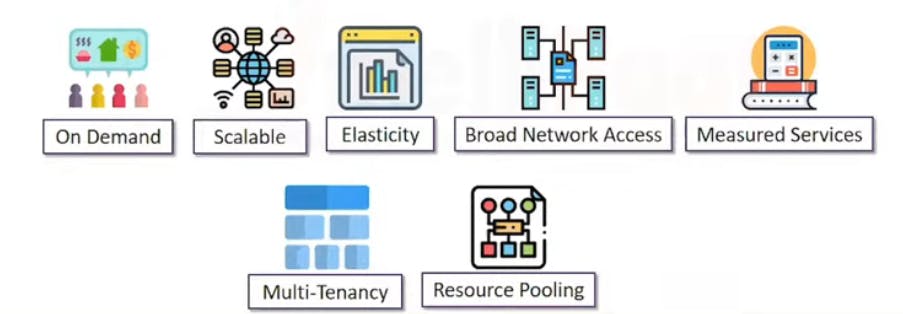Table of contents
Introduction of Cloud Computing and Cloud Concepts
Starting with real world example:
Before jumping into Cloud Computing definition and technical terms, we will first focus on a real time business model example mentioned below.
Consider the demand for e-commerce websites during the pre-holiday rush hour scenario. These High customer & transaction volumes exceed normal operations throughout the rest of the year. When this happens, retailers offering online shopping can greatly benefit from hosting their selling functions in the cloud. Cloud providers can accommodate the resources needed to meet this increased demand and charge for increased usage at a negotiated price, but when shopping drops off after the holiday, they will charged at less prices.
Above example helps to measure organizations expenditures (CapEx vs OpEx) as below:

“Why buy it… When you can rent it?!”
What is Cloud Computing?
A new pay-as-you-go method of providing, consuming, and producing IT resources over the Internet is called cloud computing. You can use technology services like computing power, storage, and databases as needed rather than purchasing, owning, and maintaining actual data centers.
Also we have millions of sources implying similar definition. ref:Azure, AWS,Google

Fundamentals concepts driving Cloud Computing:
Time to Market
Time to market means the deployment time it takes to go production live with Cloud Computing services compared to Onprem infrastructure services.
Cost
For on-prem implementation, you should consider upfront costs for the space to put your servers, hardware, licenses, etc. And for cloud, you have an ongoing monthly subscription cost along with the internet expenses and agent device. Again , it all comes down to whether you are looking for capital expenditures or operating costs.(CapEx vs OpEx)
Scalability
An organisation's computing needs do not remain static. This very ability to upscale or downscale IT resources as needed to meet organisational changing demand. This is one of the quality of the cloud and the primary driver of its high popularity with businesses.
Elasticity
This is the pliability of allocating resources for immediate usage, rather than getting resources in line with alternative variables.
Simplicity
Usage and administration of cloud services have to be clear to cloud customers and users; from their perspective, a digital information or data service is paid and can be used, with little or no extra input aside from what's necessary to perform their duties
Onprem vs Cloud

Cloud Concepts:

Lets discuss some important concepts
Broad network access: Network bandwidth without bottlenecks. Generally this can be accomplished by using advanced routing techniques, load balancers, multisite hosting etc.
On-demand services: Model that allows customers to scale up their resources(eg: compute,storage etc) with little or no intervention from or prior communication with the provider.
Resource pooling: is the characteristic that allows the cloud provider to meet various demands from customers while remaining financially viable and also handles multiple customers or "tenants" with scalable services.
Measured or metered service: Customer is billed for only what they are using and nothing more. It's like how electricity company charge each month for the services we used.
Cloud Computing Highs vs Lows:
Advantages:
- It's economical than purchasing expensive server/network gear up front
- Improved flexibility
- Expanded disaster recovery capabilities
- Scalability
Disadvantages:
- Depended on constant (and stable) internet connection
- Billing costs are potentially unbounded per the subscription model
- Security and access concerns in regard to extremely sensitive client data
- Requires high level trust (which adds risk parameters)
Some interesting Interview questions:
- What is cloud computing ? Why do you think organisations are shifting from traditional On-prem Computing to Cloud computing?
- Explain different data types used in cloud computing?
- Explain difference between Scalability and Elasticity?
- What is Cloud Computing in Business model aspect?
- What are the main constituents that are part of the cloud ecosystem?
* Share or Ask more questions related to Cloud Computing concepts in comments sections. In next blog, we will cover design, models, services etc that are very much important in securing all these components.
